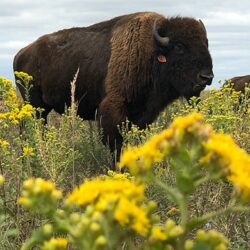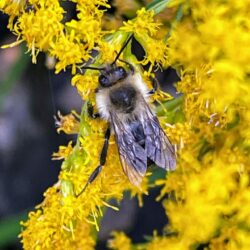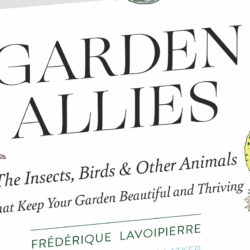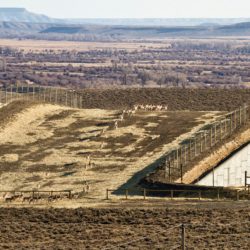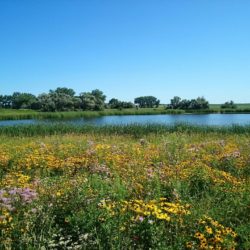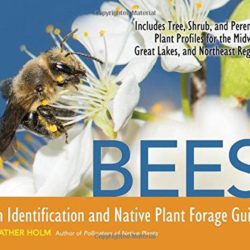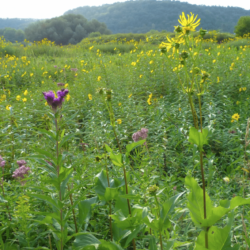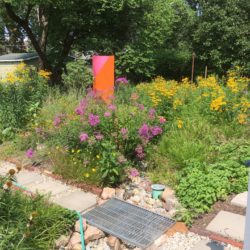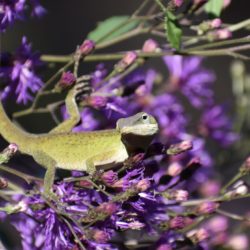Originally published by Zoo New England. Republished with permission Written by: Matt Kamm, Zoo New England Zoo New England, the organization that runs the Franklin Park (Boston, MA) and Stone…
Landscaping for Wildlife
Seeing and learning about wildlife is an enriching experience that anyone can enjoy. When landscapes provide food, shelter, water, and nesting areas for reproduction, a rich variety of life follows. The result is a healthier, more resilient ecosystem for all inhabitants.
Pollinator Protection in Suburban Boston: Buzzworthy News
Written by: Breeka Lí Goodlander, CWS, Town of Franklin, MA “Save the Bees,” “Pollinator Patch,” and a myriad of other slogans are common-place today. One can’t travel far without seeing…
The right way to leave stems for native bees
This article was originally published by the Tufts Pollinator Initiative and has been edited for membership clarity. Written by: Nick Dorian, Tufts Pollinator Initiative (TPI) The life cycles of…
Reintroducing bison to grasslands increases plant diversity, drought resilience, study finds – Kansas State University
Originally published by Kansas State University. Reprinted with permission By: Erin Pennington MANHATTAN — A Kansas State University-led study has found that reintroducing bison — a formerly dominant grazer —…
Bee it Known: Biodiversity is Critical to Ecosystems – Rutgers University
Originally published by Rutgers University. Reprinted with permission. By: Kitta MacPherson A Rutgers-led study on bees shows how different species pollinate the same plants over time Rutgers has conducted the…
Garden Allies
The Insects, Birds & Other Animals That Keep Your Garden Beautiful and Thriving
In Garden Allies, author Frederique Lavoipierre encourages a perspective shift towards the critters in our gardens. Instead of thinking of garden inhabitants as good or bad, she encourages us to think of them in their ecological roles, with a food-web perspective. What results is a book jam-packed with identification clues, gardening guidance, and stories that had me penciling exclamation points in the margins.
Corridor Ecology: Linking Landscapes for Wildlife Conservation
By Annika Keeley
Building is usually a positive sign of economic growth but for wildlife, these roads and structures – even fences around parks and other green spaces – represent barriers to the daily and seasonal movement they rely upon for survival. So how can we coexist with wildlife as we enjoy the resources our communities have to offer?
The South Dakota Pollinator Project
By Paul Clinton
Over the past several years, one of my favorite landscape architecture projects has been developing and monitoring five pollinator plots at the South Dakota Department of Transportation (SDDOT) rest areas in the eastern part of the state along Interstate 29. As a landscape architect, it is satisfying to witness the return of native prairie plant communities and be a part of diverse projects – and working in South Dakota has allowed me to do both.
BEES: An Identification and Native Plant Forage Guide
Reviewed by Bruce Wenning
Heather Holm has written another beautiful book for pollinator gardening enthusiasts. She combines Jane Goodall’s style of long-term field observations with library research. Her photographs and illustrations capture your interest and increase your appreciation for bees, their natural history, and their host plants.
Native Habitat Restoration on an Old Wisconsin Farm
By Marcie O’Connor
Our adventure began in early 2000 when my husband and I bought 500 acres of an old farm in the Driftless Area of western Wisconsin. The Driftless Area is the part of the Midwest that was never covered by glaciers, so the land is beautiful – with steep hills and narrow valleys. I’m interested in native plants and natural landscapes, so I thought it would be fun to return the land to prairie and how it looked before it was farmed.
Adjusting to a New Normal
By Cody Hayo
Throughout 2021 we have struggled to get back to a “New Normal.” The “normal” we had grown accustomed to since 2016 involved very active participation with a local stormwater grant program. This program aims to capture stormwater runoff before it reaches rivers and streams, emphasizing garden-based solutions. During the pandemic in 2020, our local stormwater grant program, which is open to residential property owners, hit a major roadblock, and the program did not accept any applications at all.
Visual Storytelling of Florida Gardening
By Joelle O’Daniel-Lopez
When we purchased our home ten years ago, it had the typical suburban NW Florida yard with a mix of the good, the bad, and the ugly. We were fortunate to have several well-established “good” trees, including live and laurel oaks, southern magnolia, and black cherry trees. In support of the “good” plants and trees, we quickly got rid of the “bad” and “ugly” nonnative invasive species.

